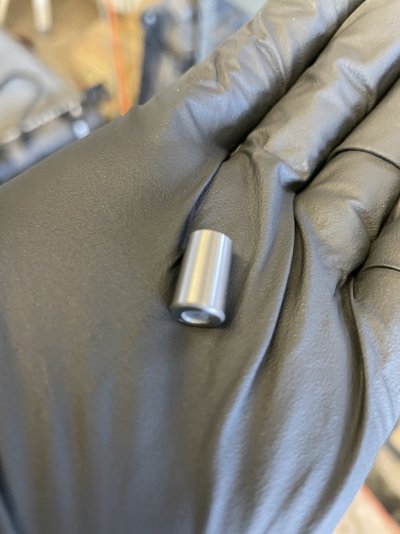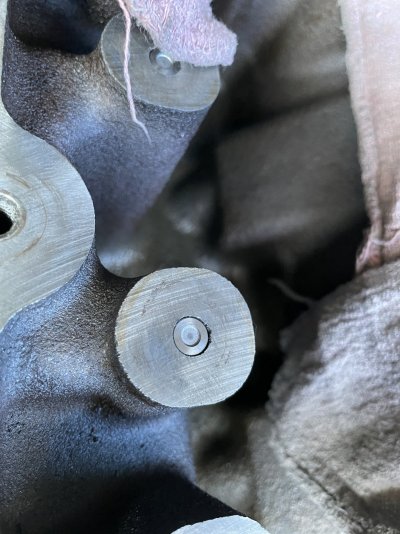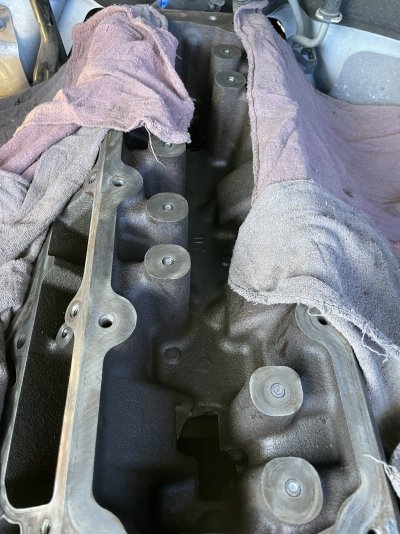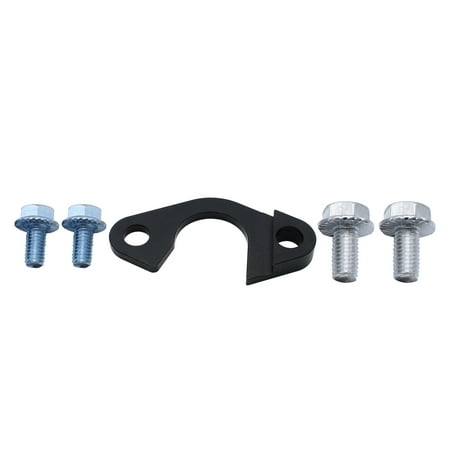Today was a slow day, just organizing tools and parts, cleaning mating surfaces.
I found that I am probably not qualified to clean the heads. I have experience cleaning iron blocks so I went to town on the aluminum head with a steal carbide blade and then a razor. It felt like those tools were being too aggressive on the head and the plastic blades didn’t have much affect so I’ll take the heads to a machine shop to be cleaned and undo any damage I hay have caused.
Cleaning. The block went well, used a steal carbide blade and a shop vac to get the top, sides, and front cleaned and prepped.
Used that A-37 bearing and hammered them in. I found that when I did it pieces of the block would chip off, I tried using a hammering pin to press it in directly on the bearing but the edge of the block still seemed to flake like in the picture. I made sure to run a shop vac through the top of the block after I put those in.
View attachment 374249
View attachment 374248
View attachment 374250




